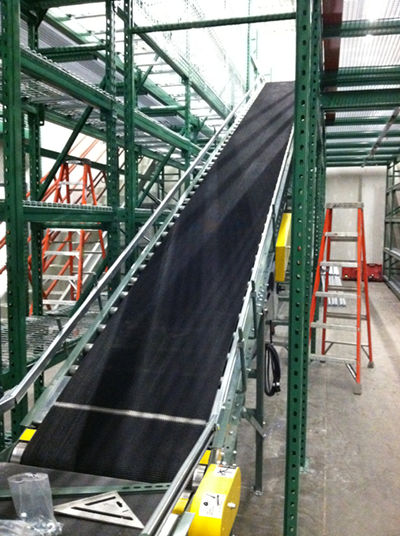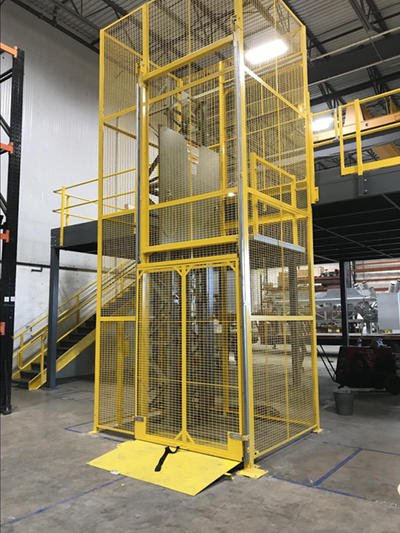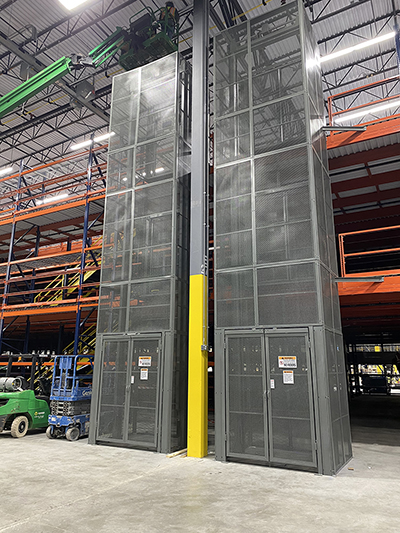Conveyor Installation
Gravity Conveyors
These non-powered conveyor systems use gravity or manual force to move products along either skate wheels or rollers. Because they lack a motor, gravity conveyors are economical and easy to install and relocate. They are commonly used in shipping, receiving, and assembly areas. We can help you decide which gravity conveyor system, dimensions, and building materials would best suit your warehouse.
Powered (Live Roller) Conveyors
As the name suggests, powered conveyors - also called live roller conveyors - are made of motorized rollers that are powered by conveyor belts, chains, or O-rings. They can move products of all sizes, shapes, and weights over long distances. Incline and decline conveyors can carry items to higher or lower elevations. Powered conveyor systems are often utilized for assembling, sorting, testing, and packaging products in industries such as manufacturing, warehousing and distribution, military, food and beverage, and automotive.
Incline & Decline Conveyors

Incline
conveyor
under
construction
These conveyors move products to higher or lower elevations. They are comprised of a center drive, gear motor, take-up, a single or double nose over, and sometimes a feeder portion. Incline and decline conveyor belts typically have a rough surface to offer more traction, which prevents the items from rolling backwards or forwards.
Overhead Conveyors
Overhead conveyors take advantage of unused vertical space above working areas in a production facility while reducing the need for costly product handling. They transport parts down to operators on the floor level and then back up to higher elevations. As long as they follow a continuous path, overhead conveyors can change direction both horizontally and vertically. We install the following types of overhead conveyors:
Enclosed track overhead conveyors protect the chain and open surfaces from contamination, reducing cleaning and maintenance costs as a result.
- Box tube enclosed track is easier to install and has a higher capacity rating than round tube enclosed track.
- Round tube enclosed track is more cost-effective, since it does not require any welding during installation. However, it is typically used for lower capacity operations.
I-beam monorail track overhead conveyors have an open design where the chain rides on an I-beam. Due to its heavy-duty, durable nature, I-beam monorail track can accommodate over 200 pounds per pendent.
Power and free overhead conveyors combine chain track (power) with a non-powered trolley track (free) that carries the load. This design allows the operator to control individual loads anywhere on the system. Since far fewer motors and moving parts are used, maintenance costs are reduced.
Vertical Reciprocating Conveyors (VRCs)
VRCs are lifts driven up and down between levels by mechanical power or the force of gravity. They provide quick and easy access to and from mezzanines, balconies, basements, and between floors of multi-story buildings. Unlike elevators, VRCs are designed to transport objects and materials only, not people. For this reason, they are governed by separate building codes.
VRCs are safer than forklifts and are less costly to install, operate, and maintain than elevators. They can be installed in an empty elevator shaft, through the floor, or for interior/exterior applications. Some facilities that benefit the most from VRCs are warehouses, industrial plants, commercial buildings, ships, and oil rigs.
-

Installed vertical reciprocating conveyor
-

Two installed vertical reciprocating conveyors
